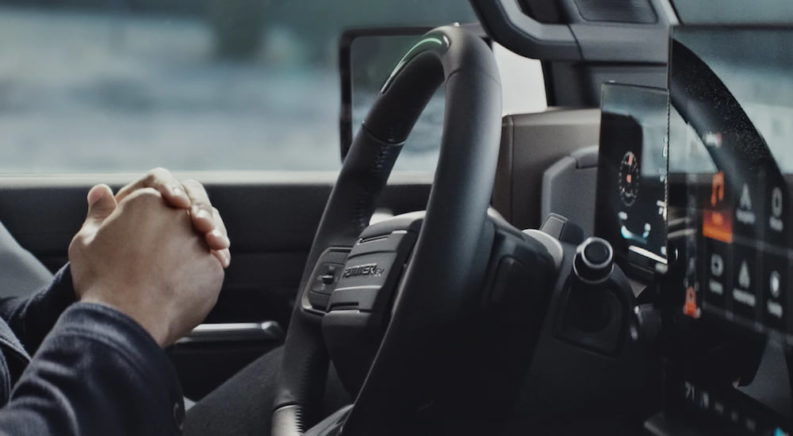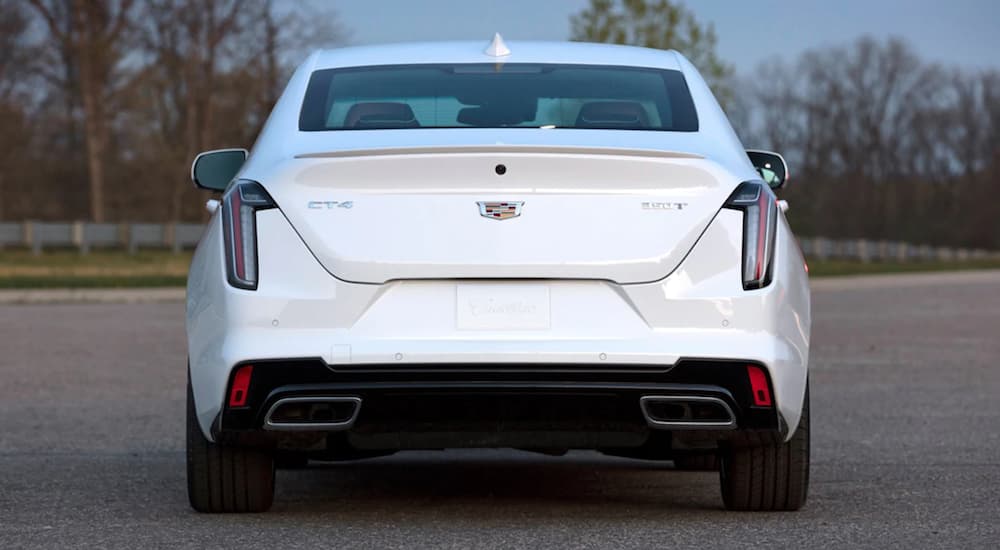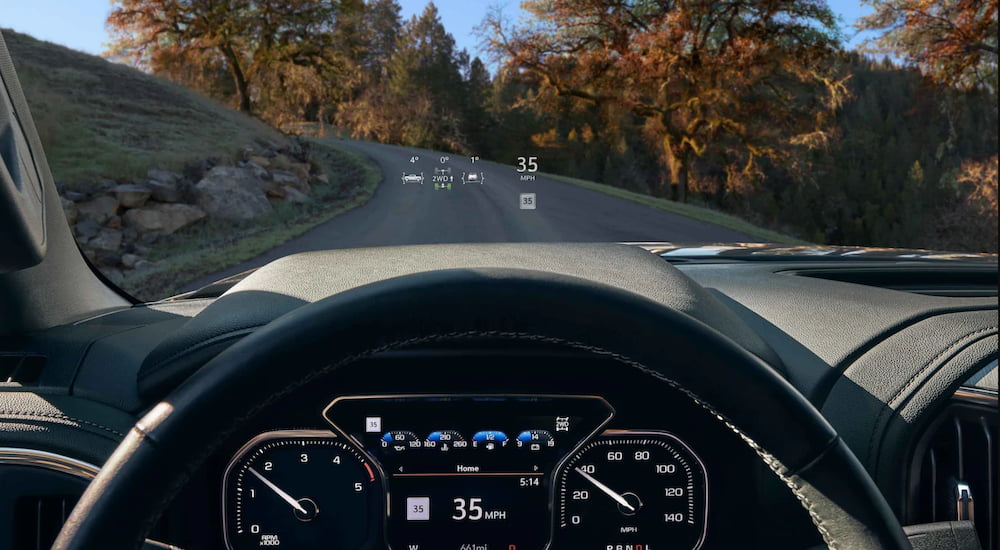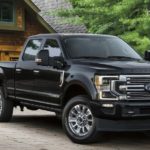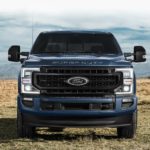Flying cars might never be a reality, but semi-autonomous trucks are coming to the GM lineup for 2022. Super Cruise, originally released on the Cadillac CT6 in 2017, has now come to fruition. The semi-autonomous highway cruising mode will be implemented on almost two dozen general motors vehicles over the next two years, including the upcoming GMC Sierra. As the technology has matured, it has begun to trickle down through the General Motors lineup and is now ready to grace more vehicles than just the flagship Cadillac executive sedan that you can find at your GMC dealer. Super Cruise makes driving long distances on the highway easier than ever before, and that capability is coming to more and more General Motors vehicles.
History of Driver Assists
Driver assistance systems themselves are nothing new, and, in fact, many of the more basic systems have been in near-universal use for decades now. These more basic, foundational systems included capabilities that kept the brakes from locking in emergency situations, allowed one to maintain a set speed without using the accelerator or brake, kept tires from unduly losing traction, and more recently helped novice drivers keep their vehicles under control in slick conditions.
Anti-Lock Braking Systems, or ABS, first arrived en masse during the fifties, helping to keep newly developed nuclear heavy bombers from running off the runway on landing. Modern electronic ABS for passenger cars first came on the scene in 1971, and by the end of the century, were commonplace. Now every new vehicle sold in the US has this system.
Cruise control is mainly a comfort and convenience feature rather than a safety feature. This surprisingly liberating ability to let the vehicle maintain its own speed came into the mainstream in the latter part of the 1960s, and by the twenty-first century was virtually standard across the board. These days, advances in sensor technology allow advanced cruise control systems to not just maintain speed but maintain a safe distance to vehicles in front.
Finally, traction control and stability control systems are related in that they often use automatic throttle and brake actuation to help drivers maintain control in slippery conditions or emergency situations. Stability control systems even help prevent rollovers in SUVs, while traction control systems allow novice drivers to enjoy high-powered cars with less fear. Building on all of these systems combined, the future of driver aids is a system of systems that allows for semi-autonomous highway driving.
Super Cruise Capabilities
Super Cruise is that future semi-autonomous system here today. Super Cruise goes further than even the new driver aids from other manufactures and can completely take over highway driving on all the most traveled freeways throughout the United States. Super Cruise delivers the safest and most luxurious long-distance driving experience possible, with complete 360-degree vision and a host of sensors helping to navigate.
To facilitate semi-autonomous highway driving, Super Cruise incorporates several separate capabilities into a single seamless system. Super Cruise can automatically steer, following the road’s undulations and curves expertly, and the system can automatically brake, including emergency braking in all kinds of conditions. Super Cruise can also expertly accelerate and keep the optimal distance between your vehicle and the one ahead, even in slow traffic. Naturally, it also maintains the desired speed when out on the open highway. The system of systems performs lane keeping without issue, as well as lane centering, staying perfectly in the center of a lane for hours on end.
Overall, while Super Cruise is not a completely autonomous system, and the driver must still watch the road, it is the most relaxing way to devour highway miles in your vehicle. Consumer Reports has even rated it far and above better than Tesla’s own Autopilot system, which was previously regarded as an industry leader. While we aren’t fully in the territory of self-driving cars yet, we are much closer thanks to systems like this.
Super Cruise Sensors and Software
To enable such high fidelity semi-autonomous driving capability, Super Cruise relies on a suite of sensors that provide overlapping and detailed information on the vehicle’s surroundings and the road ahead at all times. The array of sensors and sources of data roughly fall into four main groups. The most seemingly mundane of these sensors are optical cameras providing a commanding view of the surrounding environment, both to the driver and to the Super Cruise system. These cameras can use stereoscopic vision to help the vehicle navigate, backing up the other sensors with additional visual information.
These cameras work well for understanding the general environment and current status and location of the vehicle, but it is the LiDar mapping of the road itself that allows a Super Cruise equipped vehicle to know the exact layout and configuration of the road ahead long before the driver can see it. The LiDar mapping of Super Cruise compatible highways, which are the majority of popular routes in the country, is how Super Cruise knows that the road will do around the next bend. This is combined with precise GPS information, so the vehicle can navigate with authority on huge swaths of the US highway network and even some Canadian freeways as well.
Finally, radar sensors take very precise and reliable measurements of vehicles in front of the Super Cruising vehicle, so your vehicle can keep track of traffic and maintain the appropriate distance. It is also capable of stopping automatically in an emergency, such as when the vehicle ahead comes to a complete stop abruptly. Thanks to this battery of overlapping sensor arrays teamed together; a Super Cruise equipped vehicle can take to the highway without issue.
Super Cruise Models Introduction
General Motors has announced that 22 models will be equipped with Super Cruise by 2023, including electric vehicles, SUVs, crossovers, and luxury sedans, among others. Originally a Cadillac-only feature, GM is now widening Super Cruise’s availability across a much wider range of vehicles. These vehicles include the GMC Sierra full-size pickup, Chevy’s popular Silverado model, and potentially some new EVs. Super Cruise will be especially useful during long excursions towing cargo.
The 2022 Bolt EUV has the system, continuing the trend of electric vehicles showcasing the latest in driver assist technology. The Bolt is a high-tech vehicle in general and makes for a stylish and extremely cost-effective daily driver. The inclusion of Super Cruise on a Chevy model was a big step towards showing that this technology will be easily accessible to most drivers and a great first step in the broader roll-out of this system.
The Cadillac CT4 can be equipped with Super Cruise, making the luxury automaker’s smallest and lightest rear-wheel drive sedan just as technologically capable at long-distance cruising as its larger siblings. The CT4 is one of Cadillac’s sportiest offerings. Another Cadillac sedan with the Super Cruise system is the CT5, a large and plush sedan almost certain to be a future classic. It is the latest and perhaps last in a long line of well-sized Cadillac sedans. These and many other vehicles already have or are very soon to receive Super Cruise capability.
Start Cruising Today
Super Cruise is the ultimate in long-distance driving luxury. Originally debuted on Cadillac models, the system is now being unveiled on a more diverse range of machinery across the General Motors lineup. The capabilities of the system are significant, allowing a driver to let the vehicle take over during long highway stints. The driver can even take their hands off the wheel and are only required to watch the road. The future is inbound, and Super Cruise is behind the wheel.

